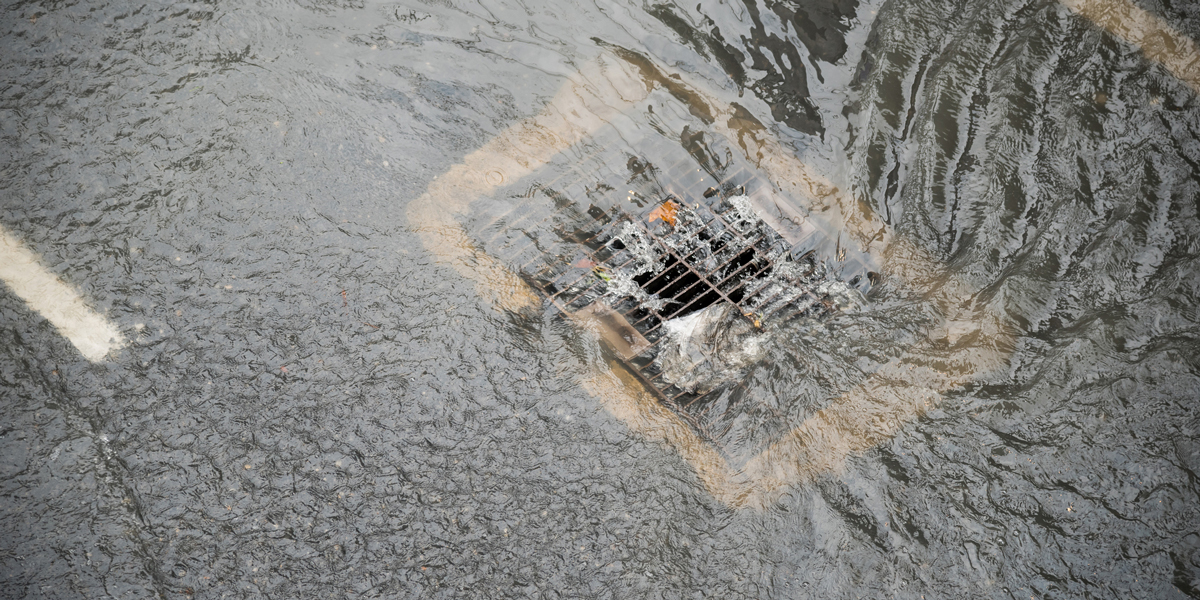Rain, rain, go away: Stormwater management is crucial for our communities

Business Record Staff Oct 29, 2018 | 11:00 am
3 min read time
708 wordsBusiness Insights Blog, EngineeringBY SID JUWARKER, Client Development Manager, Terracon
Throughout the year, we’ve seen a lot of precipitation, especially in recent months. Through October 29th, 2018, Des Moines had seen more than 37,52 inches of rain, which is already above the yearly average of 36inches.
During those rainy and dreary days, I got to thinking about stormwater management and how important it is for our communities and environment.
Stormwater is rainfall or snowmelt that runs off the ground or impenetrable surfaces such as sidewalks, roads or buildings. It generally ends up in our rivers, lakes and other surface waters. It can also filter into streets and human-made draining systems, like storm drains or underground pipes. Water entering storm sewers typically doesn’t receive any treatment before entering our waterways, which can lead to contamination and other problems.
Because Terracon works on many construction and building projects, which can expose harmful underground chemicals and sediment, stormwater management is a big part of what we do. My goal is to inform of the dangers of stormwaters and how construction companies like Terracon can and should mitigate those risks.
Why it matters
Managing stormwater is essential because it is currently the leading cause of water pollution. The Environmental Protection Agency estimates about 30 percent of pollutants in our water is the result of stormwater.
As water drains off from various surfaces, especially on a job site where soil is disturbed, it collects pollutants such as oil, pesticides, fertilizer, bacteria and other harmful chemicals and carries them into our waterways. If left untreated, the contaminated water can make its way into our drinking water.
The harmful chemicals can also kill aquatic life and make waterways an unhealthy place to live, work and play. The stormwater runoff can also erode weak soil, leading to an increase in sediment in our waterways, potentially causing clogs and localized flooding.
As cities urbanize and replace natural vegetation with solid surfaces, flooding increases because water cannot slowly drain into the land. The stormwater then deposits more sediment into waterways, decreasing their depth and potentially leading to more floods in the future.
This is why stormwater management is a huge concern in construction. When the use of land changes, it can have a major effect on stormwater runoff — and not always in a good way.
Preventive measures
Beyond the environmental and social considerations of stormwater management, there are stormwater permit requirements at the city, state and federal level. The Clean Water Act, a bill passed in 1972 to help maintain the chemical, physical and biological integrity of our waterways, was primarily aimed toward stormwater management.
Failure to comply with local policies is a violation of the Clean Water Act and may subject violators to hefty fines.
To help mitigate risks during construction, firms like Terracon take careful and planned steps to control stormwater during the project. Gerald Hentges, senior hydrologist at Terracon’s Des Moines office, said he looks for areas on a construction site where controls are required, like loose top soil, drainage ditches or nearby bodies of water.
An important part of stormwater management is inspecting soil. A lot of precipitation can lead to erosion, which can turn into a mess if not managed properly. To stabilize the soil, Hentges uses best management practices (BMPs) like stacking hay bales in draining ways or installing silt fencing, erosion socks and other mitigation tools.
Since construction sites usually lead to disturbed soil, Hentges said it’s important to use mats, mulches or blankets to temporarily stabilize and permenantly establish vegetation on job sites. The materials intercept runoff and settle out sediment while allowing water to run through.
After the initial stormwater management setup, it’s important to maintain and inspect the tools over the life of the construction project.
“The most important thing to remember is that unmaintained [best management practices] do not function properly and allow sediment to escape and enter the waters of the state,” Hentges said. “Frequent and rigorous inspection of the runoff controls is required on every site.”
My takeaway
Stormwater mitigation is one of the most important things we do at Terracon. And to keep our waterways safe, it’s important for everyone to be aware of the work that goes into ensuring safe stormwater runoff.
 |
Sid Juwarker View Bio |











